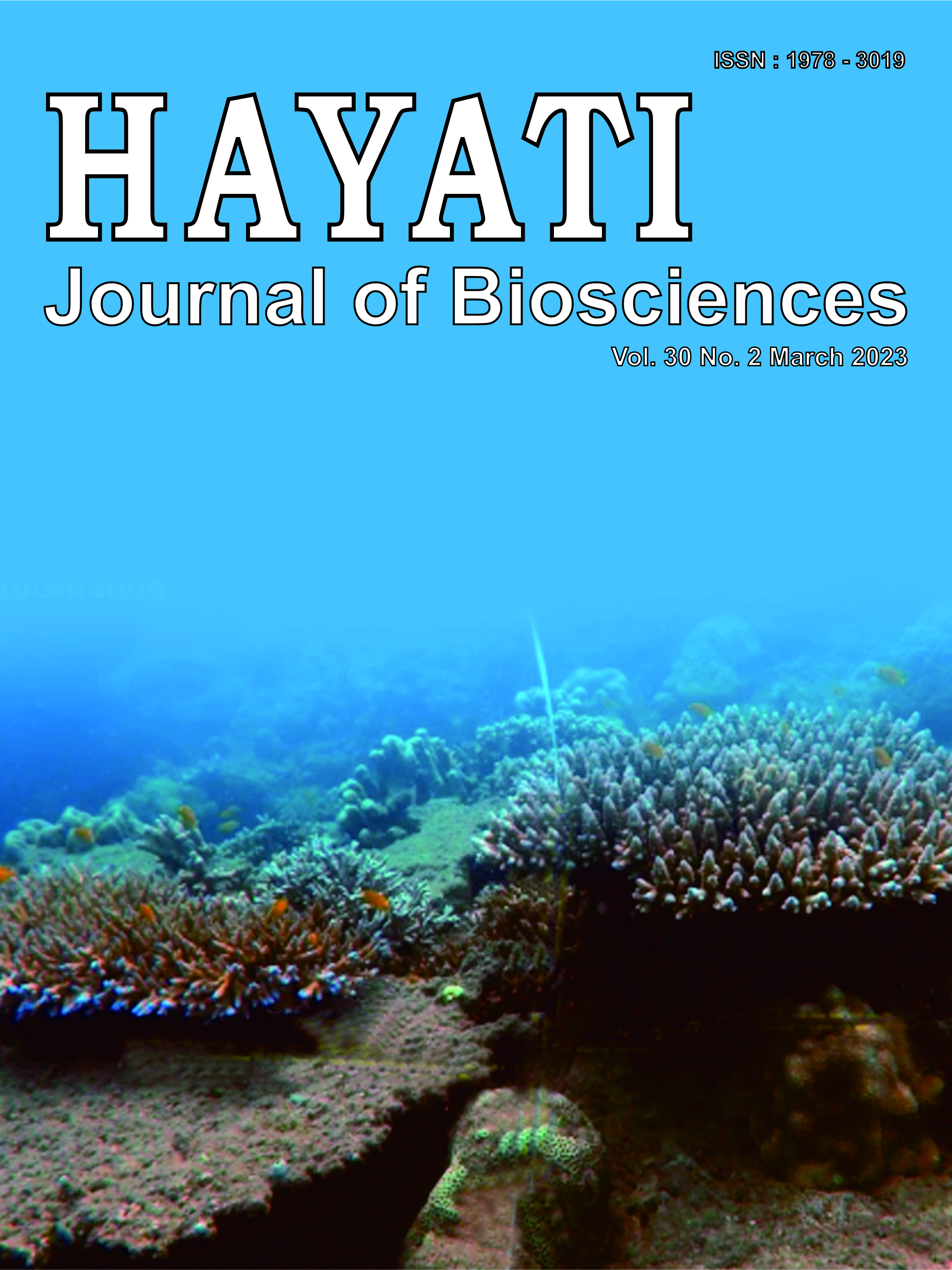Morphological and Anatomical Comparison between Tetraploid Stevia rebaudiana (Bertoni) Bertoni and its Parental Diploid
Abstract
Stevia rebaudiana (Bertoni) Bertoni is a perennial herbaceous plant that produces natural low glycemic-index sweeteners alternative to sugar cane. The genetic improvement of Stevia needs to be investigated to increase its productivity. Although this plant has a narrow genetic diversity, genetic improvement through polyploidization may succeed. Meanwhile, genotypic characters of tetraploid Stevia were previously reported. This study then observed the phenotypic characters of the tetraploid plants, which aimed to evaluate the morphological and anatomical characteristics of tetraploid Stevia clones compared to its wild-type parental diploid plant. Three tetraploids and one diploid clone were grown in the field for 12 weeks. The results of qualitative descriptive characters showed that the tetraploid clones B60.3H8, P1T22 and P3T5 had habitus type, shoot bud shape, leaf margin, leaf venation, shape, and type of stem, type of flower, and seed similar to the diploid parental clone. However, the quantitative characters showed that the tetraploid clones had leaf size, stem diameter, root size, length of the single flower, length of the flower stalk, and length of fruit which were more extensive than those of the parental diploid clone. The leaf color of tetraploids was a darker green, and the range of initial flowering times was earlier. This finding gives more understanding of the phenotypic and anatomical characteristics of Stevia tetraploids compared to their parental diploid plant.
Downloads
Copyright (c) 2023 Rifatul Adabiyah, Diah Ratnadewi, Tri Muji Ermayanti, Erwin Al Hafiizh, Elsa May Susanti

This work is licensed under a Creative Commons Attribution-NonCommercial 4.0 International License.
HAYATI J Biosci is an open access journal and the article's license is CC-BY-NC. This license lets others distribute, remix, tweak, and build upon author's work, as long as they credit the original creation. Authors retain copyright and grant the journal/publisher non exclusive publishing rights with the work simultaneously licensed under a https://creativecommons.org/

























.png) IPB University
IPB University Department of Biology
Department of Biology The Indonesian Biological Society
The Indonesian Biological Society 

